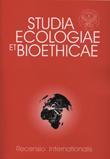The impact of hydrotechnical facilities on island avifauna: a case study of the middle Vistula River
The impact of hydrotechnical facilities on island avifauna: a case study of the middle Vistula River
Author(s): Dariusz Bukaciński, Arkadiusz Buczuński, Monika BukacińskaSubject(s): Essay|Book Review |Scientific Life
Published by: Wydawnictwo Naukowe Uniwersytetu Kardynała Stefana Wyszyńskiego w Warszawie
Keywords: middle Vistula River; riverine birds; river conservation; e!ects of hydrotechnical facilities; islands and shoals
Summary/Abstract: The study was conducted in the years 1994-2006 at the middle of the Vistula River between Wróble and Kochów (416th – 418th km of the waterway). The presence of islands and steep banks makes it a key place for nesting avifauna, including a number of endangered species. The aim of this paper is to present the impact of hydrotechnical facilities (a diversion weir) on habitat changes, and consequently on the abundance and distribution of birds that inhabit this part of the river. A cross-divider in the riverbed (weir) connecting the bank of the river with one of the islands increased the flow rate and pushed the current to the middle of the river, directing it towards the islands. The result of these changes was a sudden erosion of the sandy, high slope at the top of the island II, a partition of this island into two parts and a slow erosion of the island located near the left bank (island IV, Fig. 1B). Lack of fixed, steady flow along the right bank resulted also in a considerably faster succession of vegetation on the island I and slow shallowing of the channel between the island and the bank. As a result, the area of sandy habitats, most valuable to nesting birds, decreased disproportionately faster than the area of the whole islands (Table 1). In the years 2001-2002 , when the island I was completely united with the right bank and the islands 0 and I were connected to each other, a width of the riverbed at this point decreased from 870 m to 710 m, i.e. by more than 20 % (Fig. 1).
Journal: Studia Ecologiae et Bioethicae
- Issue Year: 11/2013
- Issue No: 4
- Page Range: 93-109
- Page Count: 17
- Language: English

